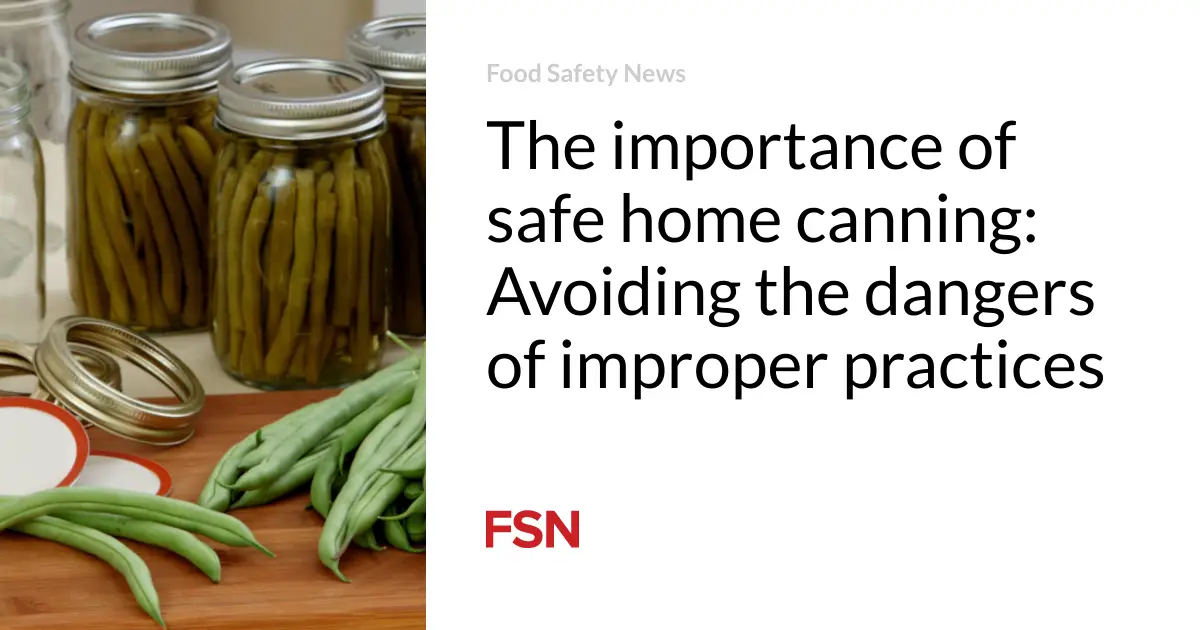
Home canning is a cherished tradition for many, offering a way to preserve the bounty of the garden and enjoy it year-round. However, improper canning techniques can lead to serious health risks, including botulism, a rare but potentially deadly illness. A botulism outbreak in California earlier this year underscores the critical importance of following safe canning practices.
The dangers of improper canning
In June 2024, public health officials in California investigated a botulism outbreak linked to family events in Clovis. The food served at these gatherings was homemade and improperly canned, leading to multiple hospitalizations and highlighting the severe consequences of not adhering to canning guidelines. Dr. Rais Vohra, Interim Health Officer for Fresno County, emphasized the importance of following proper canning procedures to prevent such outbreaks.
Botulism is caused by a toxin produced by the bacterium Clostridium botulinum. This toxin can lead to muscle paralysis, respiratory failure, and even death. Symptoms include weakness, dizziness, blurred vision, drooping eyelids, and difficulty speaking or swallowing. In severe cases, the toxin can cause paralysis that spreads from the upper body to the lower extremities.
The outbreak in Clovis involved several hospitalized patients, with about 30 people exposed to the contaminated food. This incident serves as a stark reminder that improper home canning can have dire consequences.
Tips for safe home canning
As the gardening season begins, many people consider canning their harvests. The USDA’s “Complete Guide to Home Canning” is an invaluable resource for both novice and experienced canners. This guide, based on research from the National Center for Home Food Preservation in cooperation with the USDA’s National Institute of Food and Agriculture (NIFA), provides comprehensive information on canning techniques, equipment, and safety procedures.
Here are some essential tips for safe home canning:
- Use proper equipment: Ensure you have the right equipment, including a boiling water bath canner for high-acid foods and a pressure canner for low-acid foods. Using the correct equipment is crucial to achieving the temperatures necessary to destroy harmful microorganisms.
- Follow tested recipes: Only use recipes from reliable sources, such as the USDA’s Complete Guide to Home Canning. These recipes have been tested to ensure they meet safety standards.
- Inspect jars and lids: Before canning, inspect jars for nicks or cracks and use new lids to ensure a proper seal. Reusing old lids can lead to seal failures, increasing the risk of contamination.
- Process correctly: Follow the recommended processing times and temperatures for each type of food. For example, low-acid foods like green beans require pressure canning to reach the necessary 240 degrees F to destroy botulinum bacteria.
- Check seals: After processing, ensure all jars have sealed properly. If a jar hasn’t sealed, refrigerate the contents and use them promptly or reprocess the jar within 24 hours.
- Store safely: Store canned goods in a cool, dark place and use them within a year for the best quality and safety.
Recognizing the signs of contaminated food
It’s crucial to recognize the signs of contaminated food. Never consume home-canned food if the jar is leaking, bulging, or swollen, if the container is damaged, or if the food is discolored, moldy, or smells bad. Additionally, if the container spurts liquid or foam when opened, discard the food immediately.
Resources for safe canning
For more detailed information on safe canning practices, visit the National Center for Home Food Preservation’s website. The USDA’s Complete Guide to Home Canning is available for free online and provides step-by-step instructions for safely preserving a variety of foods.
The USDA also offers tips on good nutrition to protect against the effects of lead exposure, emphasizing the importance of a varied diet from all five food groups. This is particularly important as canning helps ensure a supply of healthy, home-grown foods throughout the year.
(To sign up for a free subscription to Food Safety News, click here.)







